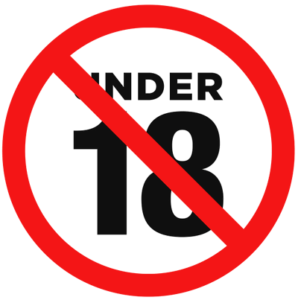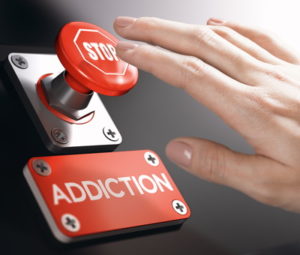Do People Pay Attention to Betting Warnings?
 Online betting sites have had to alter their setups more and more in recent times to cater to new rules. This has included the necessity of displaying signs and links for responsible gambling, showing key terms and conditions, reinforcing that gambling is for those aged 18+, verifying customers, checking they can afford to gamble and removing the ability for customers to bet using credit. While these have be incorporated so as to satisfy the rules of the United Kingdom Gambling Commission, the question is have they have made much difference?
Online betting sites have had to alter their setups more and more in recent times to cater to new rules. This has included the necessity of displaying signs and links for responsible gambling, showing key terms and conditions, reinforcing that gambling is for those aged 18+, verifying customers, checking they can afford to gamble and removing the ability for customers to bet using credit. While these have be incorporated so as to satisfy the rules of the United Kingdom Gambling Commission, the question is have they have made much difference?
After all, does anybody who is interested in casino gambling or sports betting actually pay attention to these warnings? Or are they simply incorporated into the sites and then ignored by their visitors as generic small print? The likelihood is many people do ignore warnings, but is there any sort of evidence to back this up? What can be done to improve these warnings if they are currently being ignored?
It’s no secret that gambling has reached heights that haven’t been seen before as online betting has grown and so consequently the level of addiction has also grown. According to a BBC News report, extreme gambling is recognised as a disorder by the World Health Organisation (WHO). In that same report, it was suggested that 2016 saw the UK Gambling Commission (UKGC) estimate that the UK had up to 340,000 problem gamblers, and many other individuals were also said to be at risk. The likelihood is that that figure has not been reduced as of late, either.
According to figures, those addicted to gambling were five times more likely to be male than female, more likely to be unemployed than working and most likely to be between the ages of 25 and 34. Furthermore, in 2019, gamblers in the UK collectively lost about £14.4 billion when participating in gambling activities.
The whole purpose of warnings is to protect the most vulnerable but could the messages themselves be getting lost for the people that need them most?
Gambling Warnings Introduced
 In a bid to combat the masses of people participating in sports betting, poker gameplay and casino gaming, the Commission brought in various warnings against gambling. This included the introduction of restrictions for television advertisements on gambling, visible billboards and posters, as well as on the casino, poker and sportsbook sites themselves.
In a bid to combat the masses of people participating in sports betting, poker gameplay and casino gaming, the Commission brought in various warnings against gambling. This included the introduction of restrictions for television advertisements on gambling, visible billboards and posters, as well as on the casino, poker and sportsbook sites themselves.
For several years now, responsible gambling has had much more of a focus for operators and the sites that promote them. This has included various links to different gambling addiction organisations, such as GamCare and GamStop. It has become commonplace for adverts to include the slogan “When the Fun Stops, Stop” in relation to this, as a way of deterring gambling participants from spending too much of their funds on betting. That was tested out in 2015 and has continued as a part of gambling advertisements ever since – although since has been accused of serious failings.
Additionally, it became a necessity for online sites and advertising campaigns to point out that players need to be 18 years or older to enjoy sports betting, casino gaming and so on. And so that people weren’t misguided by an advertising slogan, it became necessary for the terms and conditions of a site to have a focus placed on them, too.
Can it be said that any specific improvement on the gambling addiction front has taken place? Or have we been meandering on in the same downward spiral as we were prior to these warnings coming into effect?
Research Suggests Little Improvement From Warnings
 The idea behind betting warnings being introduced was to try and set the increasing gambling addiction cases on a downward trajectory. After a few years of being in operation, what was the outcome? Well, reports suggest that the gambling ads with the warning messages have done little to reduce addiction.
The idea behind betting warnings being introduced was to try and set the increasing gambling addiction cases on a downward trajectory. After a few years of being in operation, what was the outcome? Well, reports suggest that the gambling ads with the warning messages have done little to reduce addiction.
Academics based at the University of Warwick measured the overall effect of the responsible gambling slogan, “When the Fun Stops, Stop”. However, it was discovered that it had very little, if any, effect on the country’s gambling behaviour since being introduced. Not only that, but the research pointed out at the fact that the word ‘Fun’ is printed in much larger font than the rest of the words in the slogan.
As part of that research, the psychology department at the university asked 506 individuals, who stated that they were fans of Premier League football and had also engaged in sports betting, to place small wagers after viewing advertisements. Some of these adverts contained the warning slogan and others did not. In the end, it was discovered that those who had seen the responsible gambling message had actually wagered more than those who hadn’t seen it.
That evidence wasn’t enough to statistically conclude that the message is wholly counterproductive, but it does seem to suggest that its overall aim has not been achieved.
After discovering that the message wasn’t having any particularly positive effects on the gambling market of the UK, the chair of the group responsible for the creation of the slogan, said that the group was considering upgrading the warning message. This upgrade would include the shrinking of the word ‘Fun’.
One of the authors of the report on the slogan, Dr Lukasz Walasek stated that the whole purpose of the slogan warning was to “encourage more responsible gambling behaviour. Yet there is hardly any evidence suggesting that such labels are effective”.
What Is the Optimal Content for Warning Messages?
 With existing warning messages having very limited effects in the way that the Gambling Commission had hoped, what can be done to try and change this? Is there a sort of optimum content that can be included in these warning messages that will really have a big enough impact on gambling addiction numbers?
With existing warning messages having very limited effects in the way that the Gambling Commission had hoped, what can be done to try and change this? Is there a sort of optimum content that can be included in these warning messages that will really have a big enough impact on gambling addiction numbers?
Science Direct tested various warning messages across electronic gaming machines (EGMs) in venues, trialing out their effectiveness. Gamblers participated in gameplay and then completed surveys afterwards, allowing the information to be assessed and analysed. In the questions, participants recalled warning messages that encouraged self-appraisal to a greater extent than messages providing information. Both of these had quite a small impact in the long-run.
However, the messages that specifically discuss money spent appeared to have the biggest impact. Such salient and effective warnings that interrupt continuous consumption of gambling could serve as a first line of defence in a bid to prevent harmful behaviour.
The self-appraisal messages on-screen included in the research from Science Direct included:
- Have You Spent More Than You Can Afford?
- Is Money All You Are Losing?
- Do You Need a Break? Gamble Responsibly.
- Are You Playing Longer Than Planned?
Meanwhile, the informative messages that were less-effective overall included:
- Set Your Limit. Play Within It.
- Only Spend What You Can Afford to Lose.
- A Winner Knows When to Stop Gambling.
- You Are Responsible for Your Gambling.
Each of those messages was displayed randomly on EGMs within a series of venues. They showed up every 15 minutes for a period of 15 seconds at a time in all, except for the largest, which requested that they appear once every hour for a period of 10 seconds.
Of the respondents surveyed, 290 of them recalled seeing messages on the EGMs, with about 164 of them specifically recalling one of them and 29 remembering two different messages. Meanwhile, a single participant recalled seeing three separate messages. Self-appraisal messages were directly recalled more frequently than the others, with 136 of the former remembered as opposed to the 71 informative messages.
“Do You Need a Break? Gamble Responsibly”, was the message that was remembered by most people, according to the research. 65% of the respondents mentioned this message over all others, while 37% remembered “Have You Spent More Than You Can Afford?”. That being said, the second of these messages was noted as having a greater impact than all of the others.
It should be noted that the UKGC has progressively brought in more rules around monitoring and interacting with customers in this manner. During the lockdown induced by coronavirus the UKGC issued a number of emergency measures that helped to reduce the amount of time and money people were gambling, such as one hour activity checks.
Comparing With Alcohol and Tobacco Products
 Other areas where addiction is quite prevalent include both alcohol and cigarettes. Both of these sectors have incorporated warning labels on their respective products, although one seems to be a lot more effective than the other. Betting warnings appear to have fallen into the same category as alcohol warning labels, which haven’t had a huge impact on those who enjoy a drink or two frequently.
Other areas where addiction is quite prevalent include both alcohol and cigarettes. Both of these sectors have incorporated warning labels on their respective products, although one seems to be a lot more effective than the other. Betting warnings appear to have fallen into the same category as alcohol warning labels, which haven’t had a huge impact on those who enjoy a drink or two frequently.
This is why there have been calls for the same amount of attention to be given to alcohol as is given to cigarettes with regard to the warning labels printed on them. Perhaps the same should be true of betting warnings, too?
A report was released stating that few people actually know the alcohol limit set by England’s chief medical officer Dame Sally Davies. That report, released by the Royal Society for Public Health (RSPH), suggested that the 14 units of alcohol per week for both men and women, is unknown by a large enough portion of the UK. The RSPH started looking for the introduction of mandatory warnings informing of those units on all drinks labels. Yet, it wasn’t there that things stopped, because the organisation also suggested that a graphic link to alcohol-related diseases such as breast and bowel cancer should be included alongside. A prolific drink-driving warning should also be included on the labels, it suggested.
At the moment, cigarette packets and all advertising relating to such incorporates some form of harsh warning with regard to the impact of smoking. Accompanying that warning is also a visual image of what smoking-related diseases do to the body, including blackened lungs and so on.
The question is, would such images of those addicted to gambling have the same sort of impact on participants of such? And what sort of images would be incorporated into the warning labels if they were to become a part of such?
Calls have already been put forward to suggest that the word ‘Fun’ should be dropped from all gambling advertising. Instead, it should be treated as a public health issue, forcing companies to drop that word. A ban on gambling advertisements during live sporting events prior to the watershed has already been brought into effect, as it is thought that such appeals to younger viewers of such.
At the same time as calls for advertisements to be banned during live sporting events, it was suggested that the gambling industry should be treated in the same way as the tobacco industry. An open letter to the culture secretary at the time Matt Hancock, said that “advertising should be consistent with other types of addictive or harmful products to public health, such as cigarette packs…”.
However, as of the moment, such dramatic changes have not been incorporated into gambling marketing. A reduction in the maximum fixed odds betting terminals (FOBTs) to £2 has been incorporated into law, but the only other changes to take place is that responsible gambling messages were to be included in all TV adverts and a multimillion-pound safer gambling advertising campaign launched later on in the year of 2018.
Can Addiction Be Solved By Advertising Campaigns?
 The overall query is whether advertisements of gambling can really be some sort of first line of treatment towards curbing gambling addiction? After all, they’re trying to promote the industry, and so incorporating such heavy warnings has the potential to turn off many people from participating in such (and not necessarily those people who have gambling problems). The gambling industry contributes quite a lot towards the government’s revenue each year, and it has taken various hits in the form of the aforementioned FOBT maximum bet reductions and so on – yet profits continue to rise for most.
The overall query is whether advertisements of gambling can really be some sort of first line of treatment towards curbing gambling addiction? After all, they’re trying to promote the industry, and so incorporating such heavy warnings has the potential to turn off many people from participating in such (and not necessarily those people who have gambling problems). The gambling industry contributes quite a lot towards the government’s revenue each year, and it has taken various hits in the form of the aforementioned FOBT maximum bet reductions and so on – yet profits continue to rise for most.
If heavily-worded advertisements with off-putting visuals included in them are to become the norm, will they really be able to send the number of gambling addicts downwards? In general, it would probably be better for such people if gambling wasn’t advertised at all. Yet, the gambling industry isn’t likely to decide in favour of such a move and the government will be reluctant given sport relies quite heavily on these betting commercials and sponsorship.
Unless a trial version of some updated advertisements is put out to the general public and research is done on such, then there won’t be any definitive response to this question. Perhaps in the future, trial runs of them can be brought out in venues, via television and so on. This would provide some information upon whether advertising campaigns can be of particular help in tackling the ongoing threat of increasing problem gamblers.



